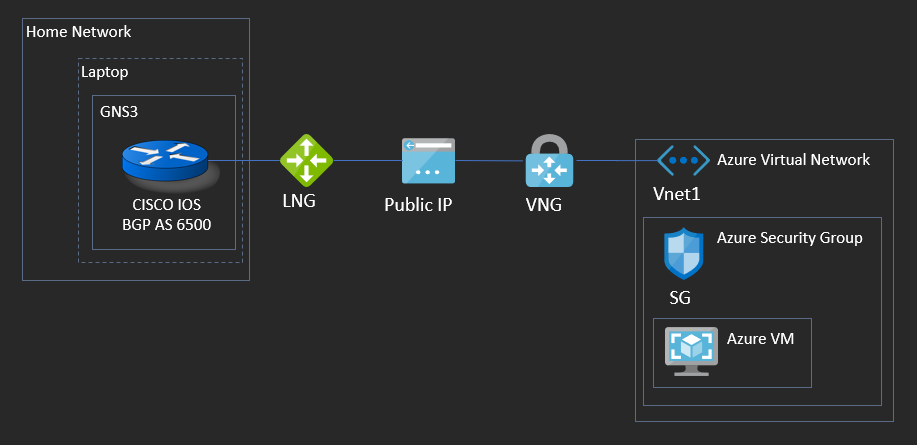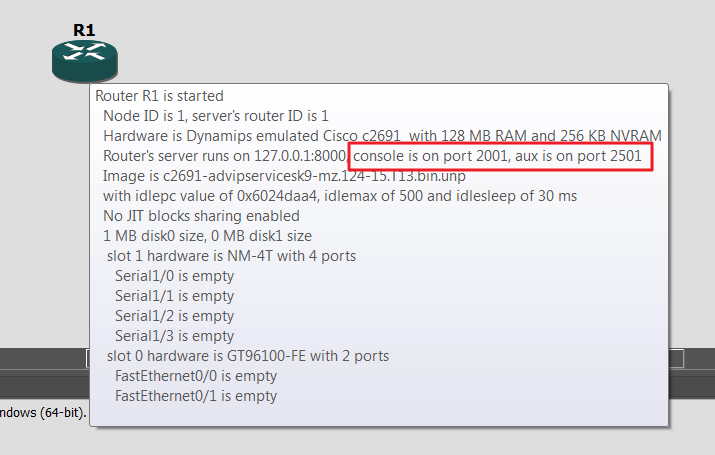

- GNS3 CANNOT CONNECT TO LOCAL SERVER HOW TO
- GNS3 CANNOT CONNECT TO LOCAL SERVER FULL
- GNS3 CANNOT CONNECT TO LOCAL SERVER CODE
- GNS3 CANNOT CONNECT TO LOCAL SERVER MAC
Let’s take a look at the full capture (Both ARP and ICMP) of the previous example where the host was live, but dropping ICMP. We’re broadcasting out ARP Requests, but as there is no device to respond nothing is returned. If I change the Wireshark filter to show ARP traffic, here’s what we see. As there is no device on the network to respond to the ARP Request, the ICMP Echo frame cannot be created, and therefore it never gets sent.


GNS3 CANNOT CONNECT TO LOCAL SERVER MAC
However, when you send traffic to a device on your local network, the router does not need to get involved, so the Layer 2 destination address is set to the MAC address of the destination device.Īnd how does our computer know what the MAC address is? It broadcasts out an ARP Request and listens for the reply containing the address.

When you ping a remote resource (something on the Internet, or on another VLAN), the Layer 2 destination address on the packet is set to your default gateway’s MAC address. What is happening here has to do with how packets are switched inside a network segment. Your eyes aren’t deceiving you, there is nothing there - we’re not even sending a single Echo Request. Reply from 10.250.1.100: Destination host unreachable. Pinging 10.250.1.5 with 32 bytes of data: With these questions in mind, let’s ping a device that is set to discard ICMP Echo Requests and see what happens. What happens if you ping a non-existent host on your network? Do you get Request timed out, Destination host unreachable, or something else? What happens if the device is live, but the firewall is blocking ICMP? Can you tell the difference between a non-existent host, and one that simply discards ICMP Echo Requests? Let’s dig a little deeper into this because it gets interesting.
GNS3 CANNOT CONNECT TO LOCAL SERVER HOW TO
The first indicates we don’t know how to get to a network, the second that we do, but there was no response.įurther, the system that replies with a Destination host unreachable is the system which doesn’t have a path to the requested network - so you immediately know where to start looking. Destination host unreachable is very different from Request timed out. The returned ICMP message can give us clues as to what is actually happening. So why is all this important? Know what ICMP messages mean Request timed out does not map to an ICMP message type as it’s not a message, rather, it is the absence of any return data. In this case the ISP will simply drop these packets and you will see a Request timed out message instead. Most residential routers will simply send all traffic they don’t have a specific route for out to the Internet, even if the destination IP is within the RFC1918 private address space. There is one caveat worth mentioning if you’re trying this at home - this primarily applies to enterprise or business networks. This message reaches our default gateway which checks its routing table for that network, doesn’t find one, and responds to our request accordingly with a Destination host unreachable message.
GNS3 CANNOT CONNECT TO LOCAL SERVER CODE
What’s happening here is our PC is sending a Type 8, Code 0 message which is an Echo Request to 10.44.44.4. We can confirm this with a Wireshark capture, looking at the response packet. If we check the ICMP Control Messages table, we can see Destination host unreachable maps to Type: 3, Code: 1. Packets: Sent = 4, Received = 4, Lost = 0 (0% loss) Reply from 10.250.1.1: Destination host unreachable. Pinging 10.44.44.4 with 32 bytes of data: If I ping an IP on a network I know my router doesn’t have a route for, we get a Destination host unreachable message from the router ( Reply from 10.250.1.1). You’ve no doubt seen these messages when doing pings. A complete list of ICMP Types can be found on Wikipedia. For example, the Destination Unreachable type contains multiple Codes, one of which is 1, which maps to the message Destination host unreachable. ICMP is a diagnostic protocol and has a number of different message types, each one responsible for communicating a specific event - be it a ping request (called an Echo Request), a ping reply (called an Echo Reply), or a number of other diagnostic results.Įach message type consists of two fields, a Type field, which is a general grouping of similar sub-types, called Codes. Ping however uses a protocol called ICMP. Most traffic on the internet is encapsulated in either TCP, or UDP. ICMP and Ping ICMP (Internet Control Message Protocol) I’m not going to cover every detail, but a few key topics that have helped me troubleshoot and better understand issues over the years. So if you’ve ever used ping or traceroute, and wanted to know a little more, read on. I’ve found that having a good networking foundation has been a tremendous help in my day to day work. I wanted to write a post and do a bit of a deepdive into ICMP, ping and traceroute. ICMP, Ping, and Traceroute - What I Wish I Was Taught


 0 kommentar(er)
0 kommentar(er)
